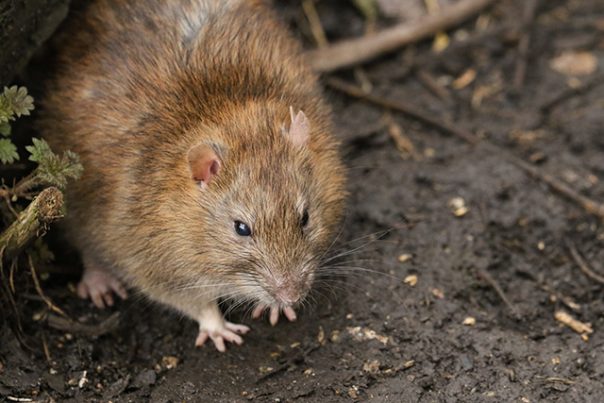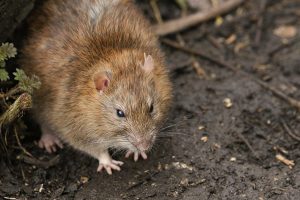
Rat-bite fever – causes, side effects and treatments at NaturalPedia.com
Thursday, June 21, 2018 by Carol Anderson
http://www.naturalpedia.com/rat-bite-fever-causes-side-effects-and-treatments-at-naturalpedia-com.html

Rat-bite fever (RBF) is an illness caused by different types of bacteria found in rats. It’s a disease known for attacking not just one but several parts of the body if left untreated. In worst cases, patients who suffer from RBF die due to complications.
In the U.S., this disease is commonly caused by the bacterium Streptobacillus moniliformis and every year, at least 20,000 rat bites occur. Most of the patients – over 50 percent – were children. One of the downsides of it is how rarely it is diagnosed. Between 2000 and 2017, only 17 cases were reported in California since it’s hard to identify the bacteria.
There are also instances when the infection from rats is ingested through contaminated food or drink products.

Known symptoms and risk factors for rat-bite fever
Symptoms of RBF vary depending on the type of bacterium that has infected a patient.
S. moniliformins – Bites normally heal quickly but patients may feel the following symptoms three to 10 days later:
-
Fever and chills
-
A headache
-
Skin rash (mostly on the arms and leg)
-
Muscle pain
-
Arthritis (particularly in the knees)
-
Vomiting and diarrhea
-
Complications (eg, abscesses, pneumonia, meningitis, heart inflammation)
S. minus – Bites also heal quickly but the following symptoms begin to appear seven to 21 days later:
-
Fever and chills
-
A headache
-
Ulceration at the site of the bite with red streaks
-
Swelling of the lymph nodes
-
A skin rash with reddish-brown or purple plaques
-
Muscle pain and arthritis (rare)
-
Vomiting and sore throat (Haverhill fever)
-
Complications (e.g., infection of the heart, pneumonia, meningitis, hepatitis)
The list of people below are the ones who are at a high risk of getting RBF:
- Animal handlers both in shops and laboratories
- Rat owners
- People living in overcrowded areas with poor sanitation and garbage disposal facility
- Those who live in places infested by rats
Body systems affected by rat-bite fever
An untreated case of RBF may lead to death with its mortality rate at 10 percent. Since the disease is a systematic one, it causes different complications in the body such as:
- Bronchitis
- Encephalitis
- Endocarditis
- Hepatitis
- Meningitis
- Metastatic abscesses
- Myocarditis
- Nephritis
- Parotitis
- Pericarditis
- Polyarteritis nodosa
- Septicaemia
- Tenosynovitis
- Vasculitis
It best to immediately seek medical assistance if a person is experiencing these symptoms to avoid further irreversible complications.
Food items or nutrients that may prevent or relieve rat-bite fever
Fever is the most common effect of RBF and it is important to lower down the body’s temperature when this happens. The following are types of food and nutrients that can alleviate fever:
- Fluid-rich food – When down with a fever, it is vital to stay hydrated. So aside from plenty of water, patients should consume other types of food that are fluid-rich like vegetable or poultry broth, and fruit juices.
- Go for fruits – Fresh fruits contain different compounds that decrease inflammation and boost immune functions.
- Probiotics – Studies have proven that the beneficial live bacteria in probiotic foods can lower fever in children.
- Add more protein – It helps combat the infection that causes the fever.
Other natural, home remedies are:
- Apple cider vinegar
- Basil
- Cilantro leaves
- Garlic
- Ginger
- Grapes
Treatment and management options for rat-bite fever
When infected with RBF health experts often prescribe medications that can decrease the inflammation caused by the bacteria. However, there are home remedies that can help treat the bite.
After getting bitten, it’s important to have the wound immediately washed with warm water and soap. If there is any bleeding, try to stop it at once and cover the wound with a clean bandage. It also helps to apply antibacterial topical creams or ointments to ease pain and swelling.
Patients also have the option to try these natural antimicrobial agents:
- Turmeric
- Garlic
- Honey
- Aloe vera
Where to learn more
- RAT POISON USE has resulted in new “super rodent” rats that are immune to chemical poisons
- Giant ‘super rats’ resistant to pesticides invading urban communities
- Rat Poison Chemical Found in Ingredient List For HPV Vaccine
- Herbal formulations able to prevent and treat dengue fever: A scientific review
- Hay fever drugs found to block the body’s ability to heal
Summary
Rat-bite fever is a systematic illness caused by an infection brought by rats. It is caused by a variation of rat bacteria such as S. moniliformins and S. minus, and at least 20,000 cases are reported in the U.S. annually.
Common symptoms observed after a bite are fever and chills, headache, skin rash, muscle pain, arthritis, vomiting and diarrhea, and other complications in other parts of the body.
When an RBF case is left untreated, there is a possibility that it can lead to death. It also causes severe complications like bronchitis, encephalitis, endocarditis, hepatitis, and meningitis.
As for treatment, wounds should be thoroughly washed with warm water and soap. Bleeding should be stopped immediately and have the wound covered in clean bandages. Applying antibacterial creams can also help.
Sources include:
Tagged Under: Tags: rat-bite fever





